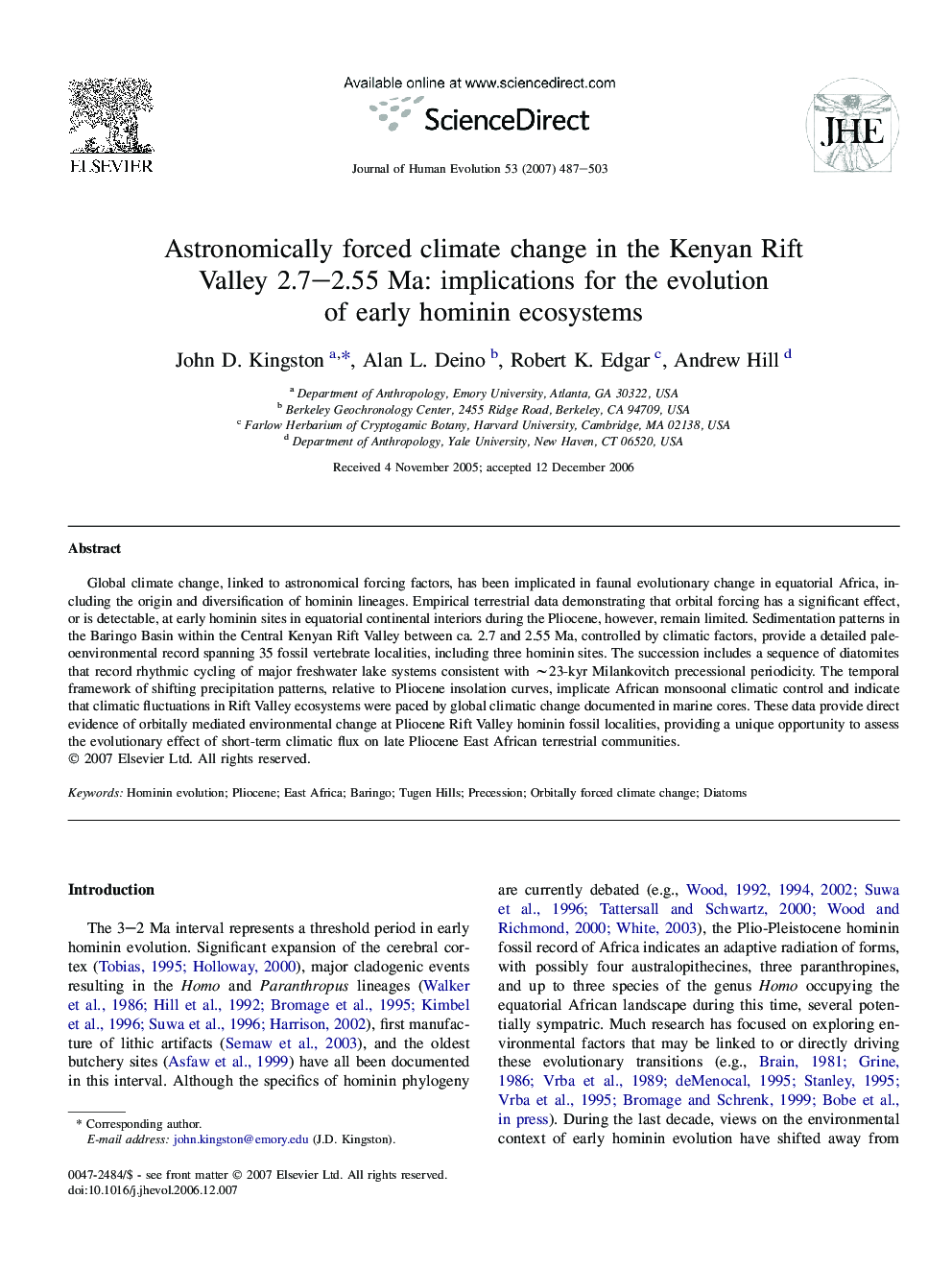| Article ID | Journal | Published Year | Pages | File Type |
|---|---|---|---|---|
| 4557192 | Journal of Human Evolution | 2007 | 17 Pages |
Global climate change, linked to astronomical forcing factors, has been implicated in faunal evolutionary change in equatorial Africa, including the origin and diversification of hominin lineages. Empirical terrestrial data demonstrating that orbital forcing has a significant effect, or is detectable, at early hominin sites in equatorial continental interiors during the Pliocene, however, remain limited. Sedimentation patterns in the Baringo Basin within the Central Kenyan Rift Valley between ca. 2.7 and 2.55 Ma, controlled by climatic factors, provide a detailed paleoenvironmental record spanning 35 fossil vertebrate localities, including three hominin sites. The succession includes a sequence of diatomites that record rhythmic cycling of major freshwater lake systems consistent with ∼23-kyr Milankovitch precessional periodicity. The temporal framework of shifting precipitation patterns, relative to Pliocene insolation curves, implicate African monsoonal climatic control and indicate that climatic fluctuations in Rift Valley ecosystems were paced by global climatic change documented in marine cores. These data provide direct evidence of orbitally mediated environmental change at Pliocene Rift Valley hominin fossil localities, providing a unique opportunity to assess the evolutionary effect of short-term climatic flux on late Pliocene East African terrestrial communities.
